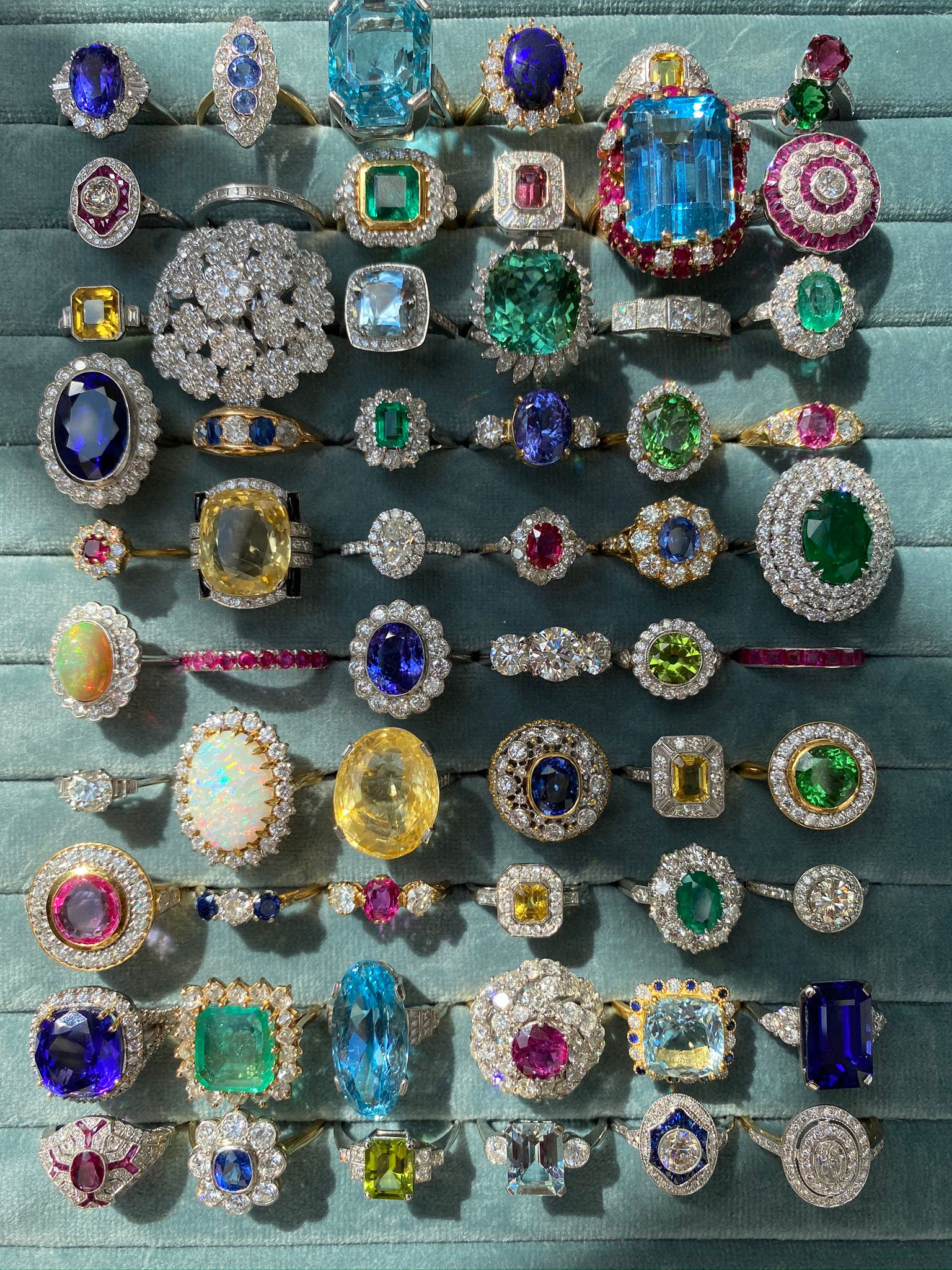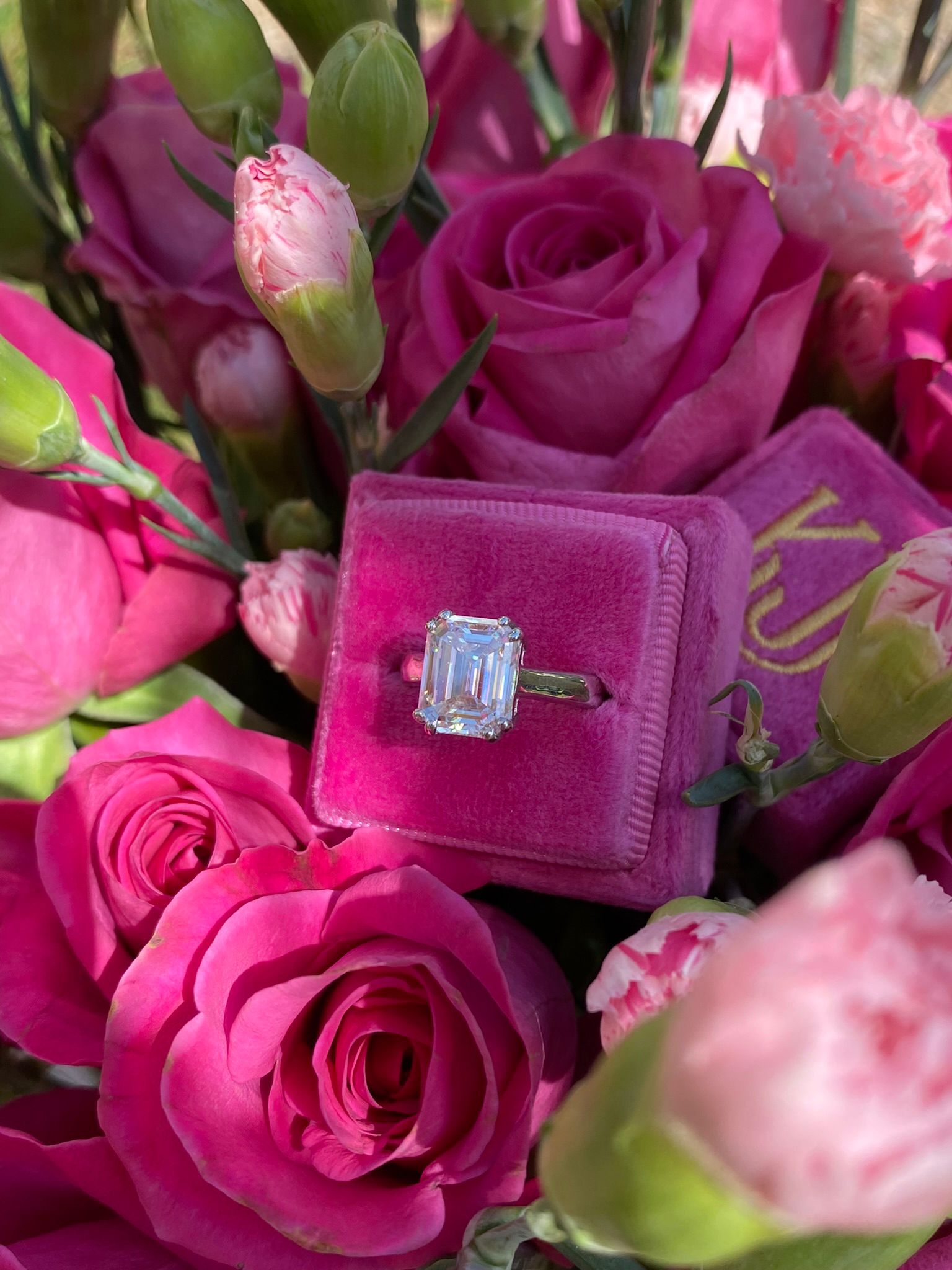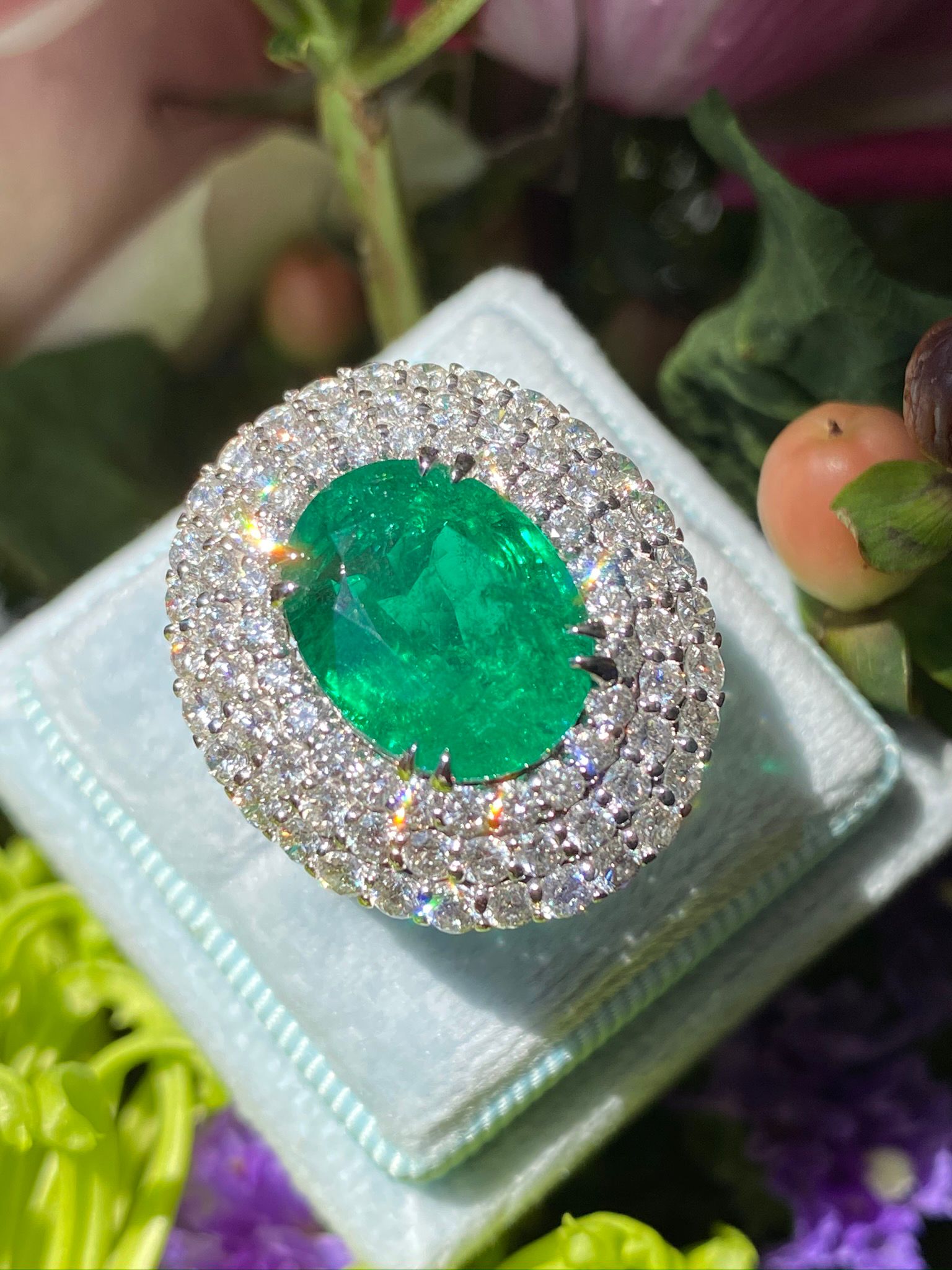Purple Reign
How Amethyst evolved from an elitist status symbol to one of the world’s most popular coloured gems.

Sapphire and Tanzanite may both occur in Purple, but there is no doubt that Amethyst has the market cornered when it comes to Violet-hued gemstones. In fact, its attractive colour, wide availability, and affordable price point have all helped to secure its status as one of the most popular coloured gemstones, period.
The colour Purple alone has quite a rich history. It was once considered a magical occurrence that could turn heads and drop jaws. It was so obscenely difficult and expensive to recreate out of nature, that the pigment (usually made from sea mollusks) was reserved solely for the clothing dye of royal or religious figures. That all changed when a chemist accidentally created a purple pigment in 1856, which was eventually named “Mauveine.” This new invention brought Mauveine to the masses, and soon the colour Purple was the must-have hue for everyone. Its popularity among the masses couldn’t even deter the who’s who of the day from wearing it. Instead, Queen Victoria and Empress Eugenie (the wife of Napoleon III) were seen wearing Mauveine dresses at major society events. But, which jewels should one wear with their new purple wardrobe? Amethysts, of course!

Coincidently, around this same time, Amethysts had their own change of fortune. Until the 19th century, Russia remained the major global source of Amethyst, making it scarce and extremely valuable, along with Diamonds, Rubies, Emeralds and Sapphires. The allure of its unique Purple colour and rarity made it a focal point of religious and royal crown jewels for ages. However, in the 1800s, a massive deposit discovered in Brazil lead to Amethysts flooding the market, which caused them to lose a touch of their aura and status in the upper echelons of society. The rest of the world, however, fell in love with the unique Purple stone they once could only admire from afar, and Amethysts became a major feature in Victorian-era jewels, all at the height of Mauveine madness!
The name Amethyst comes from the ancient Greek word for “not intoxicated.” Revered by the Ancient Egyptians, Greeks and Romans, the stone is said to have gotten its trademark hue from the grapes of Bacchus, God of Wine. Believing the magic stone could prevent overindulgence and intoxication, among other medicinal properties, both the Greeks and Romans placed the stones in their wine goblets before indulging, while some really posh citizens actually drank their wine from goblets made of Amethyst.

Today, Amethyst deposits can be found all over the world, including Canada, India, Mexico, Myanmar, Sri Lanka and the United States. However, the most prolific sources remain Brazil, and other parts of South America, and Zambia, and other parts of Africa. Amethyst is a quartz, made of silicone and oxygen, which grows in large, single or twinned crystals, similarly to other gem-quality quartz, including Citrine, Rose, Rock and Smoky Quartz.
Generally found in large geodes (which have a market all their own), Amethyst quartz actually gets its Violet hue from trace amounts of Iron (sorry, Bacchus), which causes a colour centre in the gem. The colour centre often causes the gem to grow with a saturated Purple tip, which eventually fades to colourless Rock Crystal further down the crystal. This makes gems with a vivid and strongly saturated Violet-Purple to Reddish-Purple colour the most valuable. However, more pastel and pinkish-lavender shades have also become popular in recent years, and are sometimes called Rose de France Amethysts.

Regardless of saturation, Amethysts should always be eye-clean at any size, and without any brown or greyish tint, and with an even colour saturation. They are also sometimes colour-zoned with other shades, including Yellow Citrine, which is called Ametrine. Most Amethysts are heat treated to achieve their ideal hue, including Green Amethysts, which rarely occur naturally and are most often the result of heat treatment in several stages.
While they may be much easier to acquire now than when they were considered the height of Royal fashion and status, Amethysts, which are the birthstone of February and also specifically represent the zodiac symbol of Aquarius (regardless of birthdate), are a stunning, much sought-after gemstone with an exclusive and unparalleled colour which continues to speak for itself.




